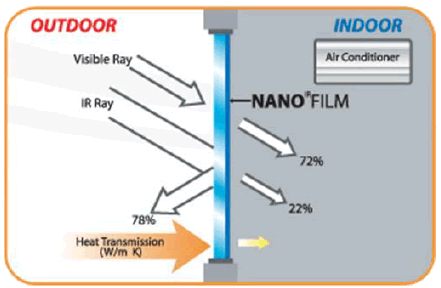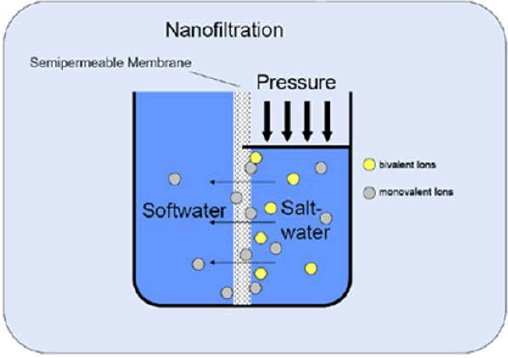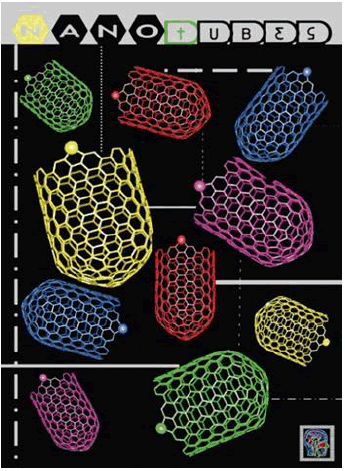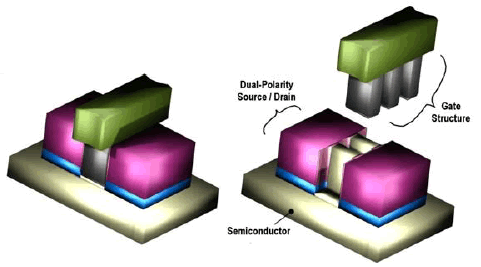Review
, Volume: 13( 1)Application of Nanotechnology in Electronics: A Review
- *Correspondence:
- Rajesh Kumar Mishra
Department of Physics, Government Model Science College (Autonomous), Jabalpur (M.P.)- 482 001, India - E-mail: rajeshkmishra20@gmail.com
Received: November 03, 2023, Manuscript No. TSPA-23-119156; Editor assigned: November 6, 2023, PreQC No. TSPA-23-119156 (PQ); Reviewed: November 21, 2023, QC No. TSPA-23-119156; Revised: January 03, 2025, Manuscript No. TSPA-23-119156 (R); Published: January 13, 2025, DOI. 10.37532/2320-6756.2025.13(1).400.
Citation: Agarwal R, Mishra RK. Application of Nanotechnology in Electronics: A Review. J Phys Astron. 2025;13(1):400.
Abstract
Nanotechnology literally means any technology on a nano scale that has applications in the real world. It is a relatively a new word, but it is not an entirely new field. It is widely felt that nanotechnology is the next industrial revolution since it has a profound impact on our economy and society in the early 21st century, comparable to that of semiconductor technology, information technology, or cellular and molecular biology. The purpose of this paper is to look into the present aspects of “Nanotechnol ogy”. This paper gives a brief description of what nanotechnology is and its application in various fields viz. computing, medicine, food technology, robotics, solar cells etc. It also deals with the future perspectives of nanotechnology, risks in advanced nanotechnology. Nanotechnology is one of the leading scientific fields today since it combines knowledge from the fields of physics, chemistry, biology, medicine, informatics, and engineering . It is an emerging technological field with great potential to lead in great breakthroughs that can be applied in real life. Novel nano and biomaterials, and nano devices are fabricated and controlled by nanotechnology tools and techniques, which investigate and tune the properties, responses, and functions of living and non non-living matter, at sizes below 100 nm. The application and use of nano materials in electronic and mechanical devices, in optical and magnetic components, quantum computing, tissue engineering, and other biotechnologies, with smallest features, widt hs well below 100 nm, are the economically most important parts of the nanotechnology nowadays and presumably in the near future. The number of nano products is rapidly growing since more and more nano engineered materials are reaching the global market Th e continuous revolution in nano technology will result in the fabrication of nano materials with properties and functionalities which are going to have positive changes in the lives of our citizens, be it in health, environment, electronics or any other fi eld. In the energy generation challenge where the conventional fuel resources cannot remain the dominant energy source, taking into account the increasing consumption demand and the CO CO2 emissions alternative renewable energy sources based on new technologi es have to be promoted. Innovative solar cell technologies that utilize nano structured materials and composite systems such as organic photo photo-voltaics offer great technological potential due to their attractive properties such as the potential of largelarge-sca le and low low-cost roll roll-to -roll manufacturing processes The advances in nano materials necessitate parallel progress of the nano metrology tools and techniques to characterize and manipulate nanostructures. Revolutionary new approaches in nano metrology will be required in the near future and the existing ones will have to be improved in terms of better resolution and sensitivity for elements and molecular species. Finally, the development of specific.
Keywords
Nanotechnology; Nanomaterials; PhotoPhoto-voltaicsvoltaics; Dendrimers
Introduction
The term nanotechnology comes from the combination of two words: The Greek numerical prefix Nano referring to a billionth and the word technology. As an outcome, nanotechnology or nanoscaled technology is generally considered to be at a size below 0:1 m or 100 nm (a nanometer is one billionth of a meter, 10-9 m). Nano scale science (or nano science) studies the phenomena, properties, and responses of materials at atomic, molecular, and macromolecular scales, and in general at sizes between 1 and 100 nm. In this scale, and especially below 5 nm, the properties of matter differ significantly (i.e., quantum-scale effects play an important role) from that at a larger articulate scale. Nanotechnology is then the design, the manipulation, the building, the production and application, by controlling the shape and size, the properties-responses and functionality of structures, and devices and systems of the order or less than 100 nm.
Literature Review
Nanotechnology is considered an emerging technology due to the possibility to advance well-established products and to create new products with totally new characteristics and functions with enormous potential in a wide range of applications. In addition to various industrial uses, great innovations are foreseen in information and communication technology, in biology and biotechnology, in medicine and medical technology, in metrology, etc. Significant applications of nano sciences and nano engineering lie in the fields of pharmaceutics, cosmetics, processed food, chemical engineering, high-performance materials, electronics, precision mechanics, optics, energy production, and environmental sciences (Table 1).
| Product | Type of nanomaterial | Indication | Company |
|---|---|---|---|
| Abraxane | Nanoparticle albumin | Non-small cell lung cancer, breast cancer, others | Abraxis BioScience |
| DaunoXome | Liposomal formulation of daunorubicin | Kaposi's sarcoma | Gilead Sciences |
| CellSearch Circulating tumour Cell Kit | Magnetic nanoparticles (ferrofluids) | Metastatic breast cancer | Immunicon |
| Verigene platform and Bio-barcode Technology | DNA-functionalised gold nanoparticles | Diagnostics | Nanosphere |
| Caelyx/Doxil | Doxorubicin liposome injection | Ovarian cancer, AIDS- related Kaposi's sarcoma and recurrent breast cancer | Ortho Biotech (Johnson & Johnson) |
| Myocet | Liposome encapsulated doxorubicin citrate complex | Recurrent breast cancer | Zeneus Pharma |
Table 1. Product currently on the market with oncology application.
Nanotechnology is an emerging and dynamic field where over 50,000 nanotechnology articles have been published annually worldwide in recent years, and more than 2,500 patents are filed at major patent office’s such as the European patent office.
Nanotechnology can help in solving serious humanity problems such as energy adequacy, climate change or fatal diseases: “Nanotechnology” Alcatel-Lucent is an area which has highly promising prospects for turning fundamental research into successful innovations. Not only to boost the competitiveness of our industry but also to create new products that will make positive changes in the lives of our citizens, be it in medicine, environment, electronics or any other field. Nano sciences and nanotechnologies open up new avenues of research and lead to new, useful, and sometimes unexpected applications. Novel materials and new-engineered surfaces allow making products that perform better. New medical treatments are emerging for fatal diseases, such as brain tumours and Alzheimer’s disease. Computers are built with nanoscale components and improving their performance depends upon shrinking these dimensions yet further”.
Nanomaterials with unique properties such as: Nanoparticles carbon nanotubes, fullerenes, quantum dots, quantum wires, nanofibers, and nanocomposites allow completely new applications to be found. Products containing engineered nanomaterials are already in the market. The range of commercial products available today is very broad, including metals, ceramics, polymers, smart textiles, cosmetics, sunscreens, electronics, paints and varnishes. However new methodologies and instrumentation have to be developed in order to increase our knowledge and information on their properties. Nanomaterials must be examined for potential effects on health as a matter of precaution, and their possible environmental impacts.
In the area of electronics, continued evolution of nano-electronics beyond the scaling limits of Moore’s law for Si-CMOS technology is an urgent quest that requires broad thinking across multiple disciplines. Issues of quantum fluctuations and energy dissipation are among some of the major challenges. There is consensus that new developments of nano-electronics must ensure compatibility with Si-CMOS technology because it is unlikely to find one alternative system that can completely replace all aspects of Si-CMOS technology. Additionally, functional integration of nano-electronics with clever three-dimensional stacking and interconnect technologies can help optimize the electronic performance. To address the issue of energy-efficient nano-electronics, exploitation of low-dissipative functional materials such as graphene, topological insulators, superconductors and spin-dependent electronics (also known as spintronics) may provide new solutions to the challenges. The combination of nano-materials and nano-electronics has also enabled advances in many applications, including energy (e.g., photovoltaic and fuel cells, light-emitting diodes, batteries), biotechnology and medicine.
Regarding the error-prone nature of nano-electronics, new methodology for designing computational architectures that adapt to the unique properties and the error-prone nature of nano-devices should be as important as the hardware development.
In the area of photonics that deals with the interaction of light and matter, it is acknowledged that many new developments based on nanotechnology and clever designs of artificial structures with high accuracy in fabrication have enabled applications in such areas as quantum dot lasers for optical communications and efficient light trapping systems for better solar cells. While current nano-photonics have largely based on well-known semiconductors such as silicon and III-V compounds, advances in novel functional materials have also stimulated new directions of photonic applications beyond those based on conventional semiconductors, although in principle photonic structures are generally quite flexible in the specific choice of materials. In the context of efficient computation technology, nano-photonics appear to be superior for interconnects whereas nano-electronics are more efficient in data processing. Therefore, integration of nanoelectronics and nano-photonics for labs-on-a-chip applications is an important technical direction for exploration.
In addition to the technical aspects, it is important to consider how to ensure nanotechnology best serves humanity. The application of nanotechnology to commercial products will require tough standards of reproducibility, reliability and safety. It is therefore important to establish a common scientific standard for safety in diverse products based on nanotechnology. Active dialogues between scientists and engineers, academics and industries, researchers and policy makers are also essential to optimize the benefits and at the same time minimize the risks of nanotechnology. Policies of regulation, either self-regulation or governmental regulation, should be carefully considered. Overall, we believe that cross-disciplinary and cross-national collaborations are critical to advance nanotechnology for the sake of mankind. Finally, long-term investments in curiosity-driven basic research and education will be essential to sustain the momentum of advances in nanotechnology.
Use of Nano technology
According to National Science Foundation and NNI, Nanotechnology is the ability to understand, control and manipulate matter at the level of individual atoms and molecules [1]. Nanotechnology is sometimes referred to as a general purpose technology because in its advanced version it will have significant impact on almost all industries and all areas of society [2].
Over the past two decades, scientists and engineers have been mastering the intricacies of working with nanoscale materials. Now researchers have a clearer picture of how to create nanoscale materials with properties never envisioned before. Products using nanoscale materials and process are now available. Anti-bacterial wound dressings use nanoscale silver. A nanoscale dry powder can neutralize gas. Batteries for tools are being manufactured with nanoscale materials in order to deliver more power, more quickly with less heat. Sunscreens containing nanoscale titanium dioxide or zinc oxide are transparent and reflect ultraviolet light to prevent sunburns [3].
Drug-delivery technique
Dendrimers are a type of nanostructure that can be precisely designed and manufactured for a wide variety of applications, including the treatment of cancer and other diseases. Dendrimers carrying different materials their branches can do several things at one time, 2025such as recognizing diseased cells, diagnosing diseased states (including cell death), drug delivery, reporting location, and reporting outcomes of therapy.
Nano films
Different nanoscale materials can be used in thin films to make them water repellent, antireflective, self-cleaning, ultraviolet or infrared-resistant, anti-fog, anti-microbial, scratch resistant, or electrically conductive (Figure 1). Nano films are used now on eyeglasses, computer display and cameras to protect or treat the surfaces.
Water filtration technique
Researchers are experimenting with carbon nanotubes based membranes for water desalination and nanoscale sensors to identify contaminants in water system. Other nanoscale materials that have great potential to filter and purify water include nanoscale titanium dioxide, which is used in sunscreen and which has been shown to neutralize bacteria (Figure 2).
Nano tubes
Carbon Nanotubes (CNTs) are allotropes of carbon with a cylindrical nanostructure. Nanotubes have been constructed with length-to-diameter ratio of up to 28,000,000:1, which is significantly larger than any other material. These cylindrical carbon molecules have novel properties that make them potentially useful in many applications in nanotechnology, electronics, optics and other fields of materials science, as well as potential uses in architectural fields. They exhibit extraordinary strength and unique electrical properties, and are efficient conductors of heat. Their final usage, however, may be limited by their potential toxicity. Nano tubes is shown in Figure 3.
Nanoscale transistors
Transistors are electronic switching devices where a small amount of electricity is used like a gate to control the flow of larger amount of electricity. In computers, the more transistors, the greater the power. Transistors sizes have been decreasing, so computer have become more powerful (Figure 4).
Until recently, the industry’s best commercial technology produced computer chips with transistors having 45 nanometer features. Recent announcements indicate that 32 nanometer feature technology soon will be here.
FIG 4: Nanoscale transistors.
Discussion
Application of nano technology
A number of Nanotechnology products are available and a tremendous amount of researches are still going on in universities, government and research laboratories. Nanotechnology applications are being developed that could impact the global market for agricultural, mineral, and other non-fuel commodities. Currently, depending on the strong inter disciplinary character of nanotechnology there are many research fields and several potential applications that involves nanotechnology. In this section we provide a brief overview about some nanotechnology and nanoscience current developments.
Obviously it can’t provide an exhaustive report of the developments in nanoscience and nanotechnology an all scientific and engineering fields. Here are some fields where nanotechnology has been implemented [4].
Nano robot development for defense
The defense industry should remarkably benefit from achievements and trends on current nanobiotechnology systems integration. Such trends on technology have also resulted in a recent growing interest from the international scientific community, including medical and pharmaceutical sectors, towards the research and development of molecular machines.
Medical nano robots
The research and development of nanorobots with embedded nanobiosensors and actuators is considered a new possibility to provide new medical devices for doctors. As integrated control mechanisms at microscopic environments differ from conventional control techniques, approaches using event-based feed forward control are sought to effectively advance new medical technologies. In the same way the development of microelectronics in the 1980’s has led to new tools for biomedical instrumentation, the manufacturing of nanoelectronics, will similarly permit further miniaturization towards integrated medical systems, providing efficient methodologies for pathological prognosis. The use of micro devices in surgery and medical treatments is a reality which has brought many improvements in clinical procedures in recent years. For example, among other biomedical instrumentation, catheterization has been successfully used as an important methodology for heart and intracranial surgery. Now the advent of biomolecular science and new manufacturing techniques is helping to advance the miniaturization of devices from micro to nanoelectronics. Sensors for biomedical applications are advancing through teleoperated surgery and pervasive medicine, and this same technology provides the basis for manufacturing biomolecular actuators. A first series of nanotechnology prototypes for molecular machines are being investigated in different ways, and some interesting devices for propulsion and sensing have been presented. More complex molecular machines, or nanorobots, having embedded nanoscopic features represent new tools for medical procedures.
Emerging applications
Scientists are looking into the following applications of nanotechnology in space:
• Using carbon nanotubes to make the cable needed for the space elevator, a system which could significantly reduce thecost of sending material into orbit.
• Employing materials made from carbon nanotubes to reduce the weight of spaceships while retaining or even increasingthe structural strength.
• Producing thrusters for spacecraft that use MEMS devices to accelerate nanoparticles. This should reduce the weight andcomplexity of thruster systems used for interplanetary missions.
• Using carbon nanotubes to build lightweight solar sails that use pressure of light from the sun reflecting on the mirror-likesolar cell to propel a spacecraft. This solves the problem of having to lift enough fuel into orbit to power spacecraft duringinterplanetary missions.
• Deploying a network of nanosensors to search large areas of planets such as Mars for traces of water or other chemicals [5].
Nanotechnology in medicine
Applications of nanotechnology in medicine currently being developed involve employing nano-particles to deliver drugs, heat, light or other substances to specific cells in the human body. Engineering particles to be used in this way allows detection and/or treatment of diseases or injuries within the targeted cells, thereby minimizing the damage to healthy cells in the body [6,7].
Current applications
While most applications of nanotechnology in medicine are still under development, Nanocrystalline silver is already being used as an antimicrobial agent in the treatment of wounds [7]. Following applications also will be released very soon: A. Qdots that identify the location of cancer cells in the body. Nanoparticles deliver chemotherapy drugs directly to cancer cells to minimize damage to healthy cells. Nanoshells that concentrate the heat from infrared light to destroy cancer cells with minimal damage to surrounding healthy cells. Nanotubes used in broken bones to provide a structure for new bone material to grow. Nanoparticles that can attach to cells infected with various diseases and allow a doctor to identify, in a blood sample, the particular disease.
Researchers are looking into the following nano electronics projects
• Using electrodes made from nano wires that would enable flat panel displays to be flexible as well as thinner than currentflat panel displays.
• Using carbon nanotubes to direct electrons to illuminate pixels, resulting in a lightweight, millimeter thick "nanoemmissive" display panel.
• Making integrated circuits with features that can be measured in nanometers (nm), such as the process that allows theproduction of integrated circuits with 45 nm wide transistor gates.
• Using nano sized magnetic rings to make Magneto resistive Random Access Memory (MRAM) which research hasindicated may allow memory density of 400 GB per square inch.
• Developing molecular-sized transistors which may allow us to shrink the width of transistor gates to approximately onenm which will significantly increase transistor density in integrated circuits [6].
Concerns of nanotechnology
These days it seems you need the prefix “nano” for products or applications if you want to be either very trendy or incredibly scary. If it were capable of surviving outdoors, and using biomass as raw material, it could severely damage the environment [8]. If wrong people gained the ability to manufacture any desired product, they could rule the world, or cause massive destruction in the attempt. Certain products such as powerful aerospace weapons, and microscopic antipersonnel devices, provide special cause of concern. Grey goo is relevant here as well. Clearly, the unrestricted availability of nanotechnology poses grave risks, which may well outweigh the benefits of clean, cheap, convenient, self-contained manufacturing. Irresponsible use of molecular manufacturing could lead to black markets, unstable arms races ending in immense destruction, and possibly a release of grey goo. Another important aspect of the nanoscale is that the smaller a nanoparticle gets, the larger its relative surface area becomes. Its electronic structure changes dramatically, too. Both effects lead to greatly improved catalytic activity but can also lead to aggressive chemical reactivity.
Environmental issue
In free form nanoparticles can be released in the air or water during production (or production accidents) or as waste byproduct of production, and ultimately accumulate in the soil, water or plant life. In fixed form, where they are part of a manufactured substance or product, they will ultimately have to be recycled or disposed of as waste. We don?t knows yet if certain nanoparticles will constitute a completely new class of non-biodegradable pollutant. In case they do, we also don?t know yet how such pollutants could be removed from air or water because most traditional filters are not suitable for such tasks. Figure 4 shows how nanotechnology effects the environment.
Health issue
Health and environmental issues combine in the workplace of companies engaged in producing or using nanomaterials and in the laboratories engaged in nanoscience. To properly assess the health hazards of engineered nanoparticles, the whole life cycle of these particles need to be evaluated, including their fabrication, storage and distribution, application and potential abuse, and disposal. The impact on humans or the environment may vary at different stages of the life cycle.
Conclusion
It is widely felt that nanotechnology will be the next industrial revolution. Today, many of our nation’s most creative scientists and engineers are finding new ways to use nanotechnology to improve the world in which we live. We see doctors detecting disease at its earliest stages and treating illness such as cancer, heart disease, and diabetes with more effective and safer medicines. Although there are many research challenges ahead, nanotechnology already is producing a wide range of beneficial materials and pointing to breakthrough in many fields.
References
- Goddard WA, Brenner D, Lyshevski SE, et al. Handbook on Nanoscience, Engineeering and Technology, 2nd Ed., Taylor and Francis, 2007.
[Crossref]
- Doyle ME. Nanotechnology: A brief literature review. Food Research Institute, UW-Madison; 2006.
- Phoenix C, Treder M. Safe utilization of advanced nanotechnology. Center for Responsible Nanotechnology (CRN), January. 2003.
- Wright L. Nanotech safety: more on how little we know. OnEarth Magazine, December. 2007;12.
- Pandey P. Role of nanotechnology in electronics: A review of recent developments and patents. Recent patents on nanotechnology. 2022;16(1):45-66.
[Crossref] [Google Scholar] [PubMed]
- Kumar R, Kumar M, Luthra G. Fundamental approaches and applications of nanotechnology: A mini review. Mater Today: Proc. 2023.
[Crossref]
- Sharma PK, Dorlikar S, Rawat P, et al. Nanotechnology and its application: A review. Nanotechnology in cancer management. 2021:1-33.
- Goswami L. A brief review on the nanotechnology and its applications. Asian J Multidimensional Res. 2021;10(10):626-632.





